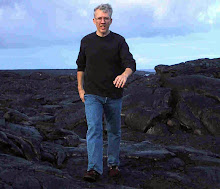Several photography books that have influenced me and the way I approach photography are what I would like to talk about in this blog. Although the books listed here are not the only ones I've read, I do have most of them. Several other books I read, I borrowed from the library and unfortunately are not available to me as a ready reference.
I frequently reference these books because I'm constantly learning. For new comers to photography and not I'm sure if this you, I recommend using the library initially because books are costly. Many of the books the library has are recent and the information is relevant to photography today. But don't discount the older books although many may be targeted towards film cameras the fundamentals are basically the same. The same is true for camera equipment maybe start with a point and shoot something you will be able to use regardless if you pursue photography as a career or just a hobby . Reading these books have provided me with a source of inspiration and has taught me many things that otherwise might have taken a long time to figure out on my own. In general looking to those who have been in the business for quite some time is very valuable also.
Some of the books, I've listed here the photographers have websites, but others I guess they must be very successful because they don't have a website. I've done extensive research to find out if these books are still being published or in circulation and I have annotated next to each along with various other information.
"How to Make Money with Digital Photography" book is still in circulation. This book is not about the technical but business side of photography. Very insightful and an often overlook aspect of the photography world. (Author Dan Heller, website: www.danheller.com)
"Profitable Photography in the Digital Age" Dan Heller again illustrates the importance of the business side of photography.
"Designing A Photograph, Visual Techniques for Making Photographs Work". (Author Bill Smith, book is still in circulation but no personal website available).
This book covers you guessed it on how to design a photograph. It includes architecture, landscape aerial the whole gamut and is very helpful.
"The Photographers Guide to Exposure" (Author Jack Neubart book still available on line but no personal website available). Although this book was published in 1988 the techniques illustrated in this book is still relevant today. Many of the large books stores offer this and other books of Jack Neubart on line.
"Photographing the Landscape The Art of Seeing" (Author John Fielder, book is still in circulation website: www.johnfielder.com) John Fielder is a photographers photographer. From reading his book I get the feeling he lives, and breathes photography. I could only hope to be as successful as he.
"John Shaw's Nature Photography Field Guide" (Author John Shaw, book is still in circulation website: www.johnshawphoto.com). This book focuses on technique as well, and again is a great reference.
"Understanding Exposure" (Author Bryan Peterson, book is still in circulation website: www.bryanfpeterson.com)
"Learning to See Creatively" Bryan Peterson has several other books also. He is a very talented writer and photographer. Unfortunately these are two books I borrowed from the library so I no longer have them as a quick reference. Reading these books are what reignited my interest in photography.
These are books I highly recommend. Not that they are the sole source to photography and the business of photography but I've read them and use them as a reference. I don't have a particular interest to see anyone of these fine photographers become more successful than they already are so if your are wondering, here is my disclaimer I don't benefit by promoting their websites or books. My only benefit and most important is that by reading these books they have made me a better photographer and artist.
I hope you too will benefit by not only reading these books but by reading my blogs also. So happy photographing and please make any comments or suggestion you have.












